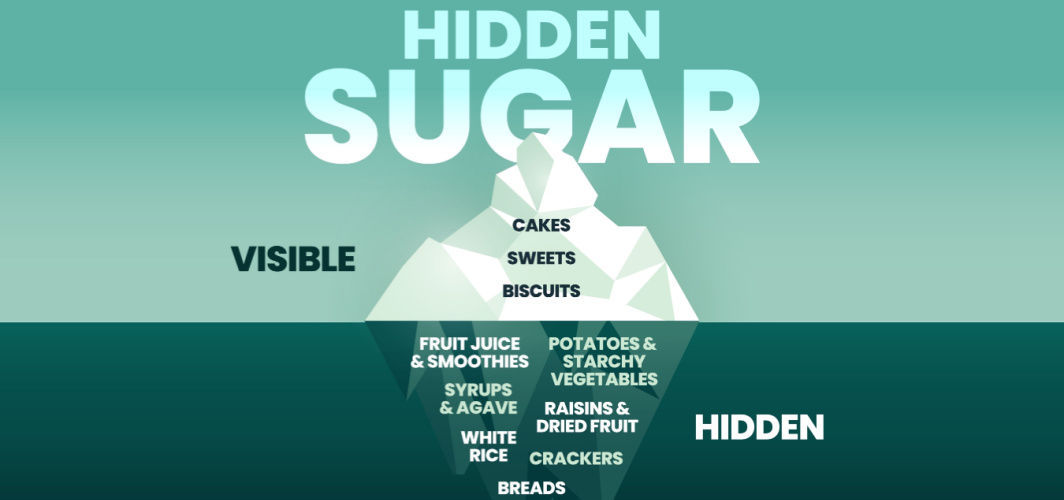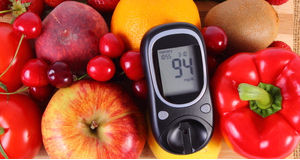Diabetes Management
Avoid or Limit These Common Foods with Hidden Sugar
5 min read
By Apollo 24/7, Published on - 07 January 2021, Updated on - 15 October 2023
Share this article
2
77 likes

Foods with hidden sugar in them
-
Carbonated beverages
-
Fruit juice
-
Breakfast cereal
-
Sauces and ketchup
-
Yoghurt/Curds
-
Bread
-
Protein powder and bars
-
Alcoholic drinks
Why is high sugar harmful to health?
- A study published in the journal JAMA Internal Medicine stated that people who consume a high-sugar diet are at an increased risk of dying from heart disease. In this study, the scientists analysed the subjects for 15 years and found that people who got 17% to 21% calories from added sugar in their diet had a 38% increased risk of dying from heart diseases compared to people who consumed 8% calories as added sugar.
- Another study conducted at the Johns Hopkins Bloomberg School of Public Health and University School of Medicine concluded that people who consume high levels of sugary carbonated beverages are at increased risk of developing coronary artery disease despite having no medical history of cardiovascular disease, cancer or diabetes.
- Studies reveal excessive sugar consumption can lead to obesity and metabolic syndrome, type 2 diabetes, hypertension, high cholesterol, non-alcoholic fatty liver and dental problems (cavities and plaque deposition).
Conclusion
Diabetes Management
Consult Top Diabetologists
View AllLeave Comment
Recommended for you

Diabetes Management
Exercising Later In The Day Can Help Control Blood Sugar Better. Here's How!
Recent studies suggest that exercising later in the day may reduce your risk of insulin resistance (high blood sugar). Let us understand all about it!

Diabetes Management
Why urinary tract infection occurs commonly in diabetics?
Researchers have found that women and older adults with uncontrolled diabetes are at a higher risk of developing urinary tract infections (UTIs). Factors contributing to frequent UTIs in diabetics include higher glucose concentration in urine, high glucose levels in the renal parenchyma, impaired immunity, and nerve damage in the urinary tract leading to reduced bacterial clearance. Studies suggest that bladder dysfunction due to diabetic neuropathy affects a significant percentage of diabetic women.

Diabetes Management
How Does Diabetes Affect the Kidneys?
Diabetes can harm the kidneys through a condition known as diabetic nephropathy. Prolonged high blood sugar levels damage the blood vessels and filtering units in the kidneys. This leads to reduced kidney function, protein leakage in urine (albuminuria), and potentially end-stage renal disease.
Subscribe
Sign up for our free Health Library Daily Newsletter
Get doctor-approved health tips, news, and more.
Visual Stories

8 Fruits That are Incredibly Healthy for Diabetes
Tap to continue exploring
Recommended for you

Diabetes Management
Exercising Later In The Day Can Help Control Blood Sugar Better. Here's How!
Recent studies suggest that exercising later in the day may reduce your risk of insulin resistance (high blood sugar). Let us understand all about it!

Diabetes Management
Why urinary tract infection occurs commonly in diabetics?
Researchers have found that women and older adults with uncontrolled diabetes are at a higher risk of developing urinary tract infections (UTIs). Factors contributing to frequent UTIs in diabetics include higher glucose concentration in urine, high glucose levels in the renal parenchyma, impaired immunity, and nerve damage in the urinary tract leading to reduced bacterial clearance. Studies suggest that bladder dysfunction due to diabetic neuropathy affects a significant percentage of diabetic women.

Diabetes Management
How Does Diabetes Affect the Kidneys?
Diabetes can harm the kidneys through a condition known as diabetic nephropathy. Prolonged high blood sugar levels damage the blood vessels and filtering units in the kidneys. This leads to reduced kidney function, protein leakage in urine (albuminuria), and potentially end-stage renal disease.
